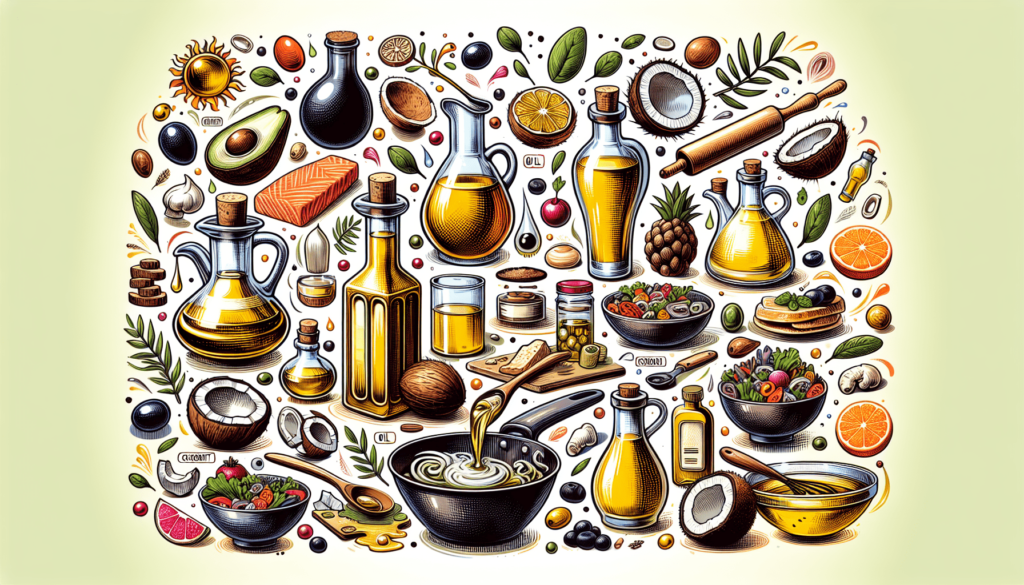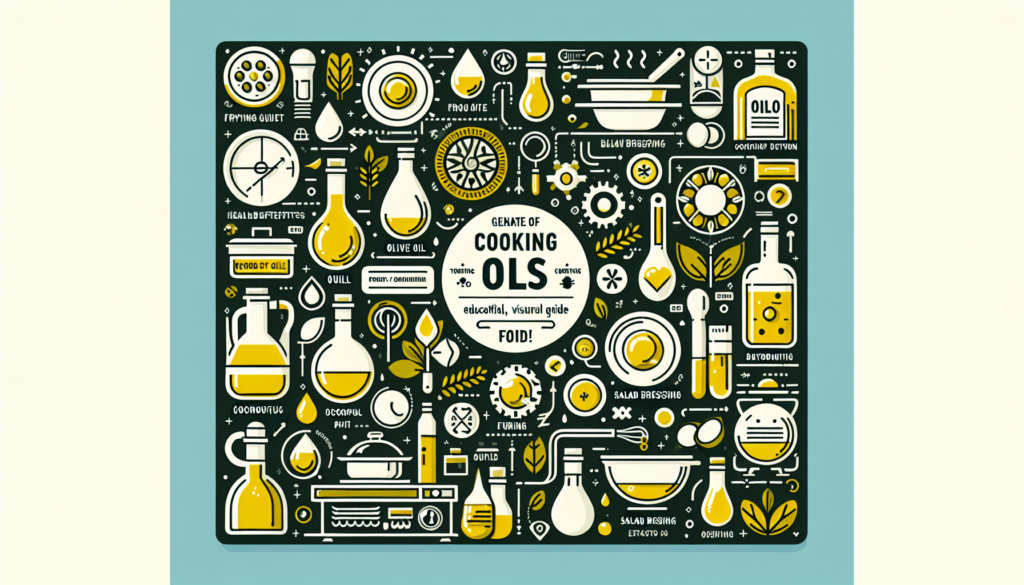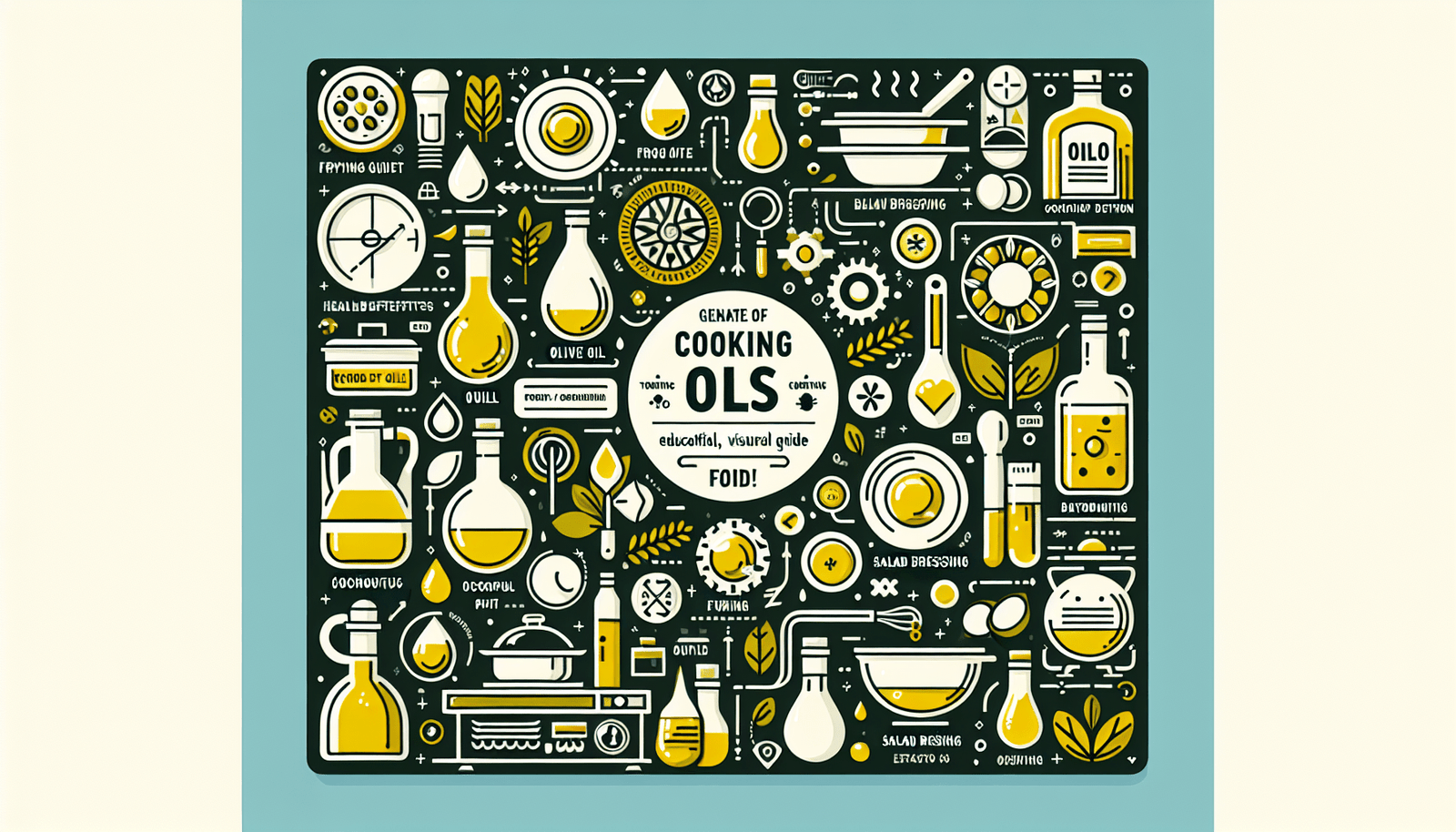Welcome to “The Complete Guide To Cooking Oils And Fats”! In this article, you will learn everything you need to know about the different types of cooking oils and fats available, their uses, and which ones are best for various cooking methods. From olive oil to coconut oil, we will cover it all to help you become a master in the kitchen. So, let’s dive in and discover the world of cooking oils and fats together!
Have you ever wondered about the different types of cooking oils and fats and how to use them in your dishes?
When it comes to cooking, choosing the right oil or fat can make a big difference in the flavor and texture of your dishes. There are numerous options to choose from, each with its unique properties and uses. In this article, we will explore the complete guide to cooking oils and fats, helping you understand the differences between them and how to use them effectively in your cooking.

Understanding Cooking Oils
Let’s start by breaking down the basics of cooking oils. Cooking oils are liquid fats that are derived from plants or seeds. They are used in a wide range of cooking techniques, from sautéing and frying to baking and salad dressings. Oils are composed of different types of fats, including saturated fats, unsaturated fats, and trans fats.
Choosing the right oil for your dish depends on the type of cooking method you are using and the flavor profile you want to achieve. Here are some common types of cooking oils and their properties:
Olive Oil
Olive oil is one of the most popular and versatile cooking oils. It is rich in monounsaturated fats, which are known for their heart-healthy benefits. Olive oil comes in various grades, including extra virgin, virgin, and light. Extra virgin olive oil is the highest quality and is best used for dressings, dips, and drizzling over cooked dishes. Virgin olive oil is slightly lower in quality but still suitable for cooking at lower temperatures. Light olive oil has a mild flavor and can be used for frying and baking.
Coconut Oil
Coconut oil is a tropical oil that has gained popularity in recent years due to its unique flavor and potential health benefits. It is solid at room temperature and has a high smoke point, making it suitable for high-heat cooking methods like frying and baking. Coconut oil is rich in saturated fats, including medium-chain triglycerides (MCTs), which are believed to have various health benefits.
Canola Oil
Canola oil is a plant-based oil that is derived from rapeseed. It has a neutral flavor and a high smoke point, making it ideal for frying and baking. Canola oil is low in saturated fats and high in monounsaturated fats, making it a heart-healthy choice for cooking. It is also rich in omega-3 fatty acids, which are essential for brain and heart health.
Vegetable Oil
Vegetable oil is a generic term used to describe various types of plant-based oils, such as soybean, sunflower, and safflower oil. These oils have a neutral flavor and a high smoke point, making them suitable for frying and baking. Vegetable oils are often used in commercial food production due to their affordability and versatility.
Avocado Oil
Avocado oil is a nutritious oil that is extracted from the fruit of the avocado tree. It has a mild flavor and a high smoke point, making it suitable for frying, sautéing, and grilling. Avocado oil is rich in monounsaturated fats, vitamins, and antioxidants, making it a healthy choice for cooking.
Cooking Fats
In addition to cooking oils, there are also various types of cooking fats that can be used in your dishes. Fats are solid at room temperature and are commonly used in baking and frying to add flavor and texture to dishes. Here are some common types of cooking fats and their properties:
Butter
Butter is a classic cooking fat that is made from churning cream or milk. It has a rich flavor and a creamy texture, making it ideal for baking, sautéing, and finishing dishes. Butter is high in saturated fats and cholesterol, so it should be used in moderation. It is also important to note that butter has a lower smoke point than oils, so it is best used for low to medium-heat cooking.
Lard
Lard is a type of rendered pork fat that is commonly used in baking and frying. It has a rich flavor and a high smoke point, making it suitable for high-heat cooking methods. Lard is high in saturated fats, but it is also rich in monounsaturated fats, making it a versatile and flavorful cooking fat.
Ghee
Ghee is a type of clarified butter that is commonly used in Indian cooking. It has a nutty flavor and a high smoke point, making it ideal for frying, sautéing, and roasting. Ghee is lactose-free and can be stored at room temperature, making it a convenient option for cooking. It is also rich in healthy fats, including medium-chain triglycerides (MCTs).
Shortening
Shortening is a solid fat that is commonly used in baking to create flaky pastries and tender cakes. It is made from hydrogenated vegetable oils and is solid at room temperature. Shortening has a high smoke point and can withstand high temperatures, making it ideal for frying and baking. However, it is high in trans fats, which can raise cholesterol levels and increase the risk of heart disease.

Choosing the Right Oil or Fat for Your Dish
Now that you have a better understanding of the different types of cooking oils and fats, you may be wondering how to choose the right one for your dish. The key factors to consider when selecting an oil or fat for cooking include:
-
Smoke Point: The smoke point is the temperature at which an oil or fat begins to break down and produce smoke. Oils with high smoke points, such as avocado oil and coconut oil, are ideal for high-heat cooking methods like frying and baking, while oils with low smoke points, like extra virgin olive oil, are best used for low-heat cooking.
-
Flavor Profile: Different oils and fats have different flavors that can enhance the taste of your dish. For example, olive oil has a fruity and grassy flavor, while coconut oil has a tropical and nutty flavor. Consider the flavor profile of the oil or fat you are using and how it complements the other ingredients in your dish.
-
Health Benefits: Some oils and fats are rich in heart-healthy fats, vitamins, and antioxidants, while others are high in saturated fats and cholesterol. Consider the health benefits of the oil or fat you are using and how it fits into your overall diet and nutritional goals.
-
Cooking Method: The type of cooking method you are using will also determine the best oil or fat to use. For frying and baking, choose oils with high smoke points like canola oil and ghee. For sautéing and finishing dishes, opt for flavorful oils like olive oil and sesame oil.
By considering these factors and experimenting with different oils and fats in your cooking, you can create delicious and flavorful dishes that are tailored to your taste preferences and dietary needs.
In Conclusion
Cooking oils and fats are essential ingredients in any kitchen, providing flavor, texture, and nutritional benefits to your dishes. By understanding the different types of oils and fats available and how to use them effectively in your cooking, you can elevate your culinary skills and create restaurant-quality meals at home. Experiment with different oils and fats in your dishes, and don’t be afraid to get creative in the kitchen. With the right oil or fat, you can take your cooking to the next level and impress your family and friends with delicious and nutritious meals.

